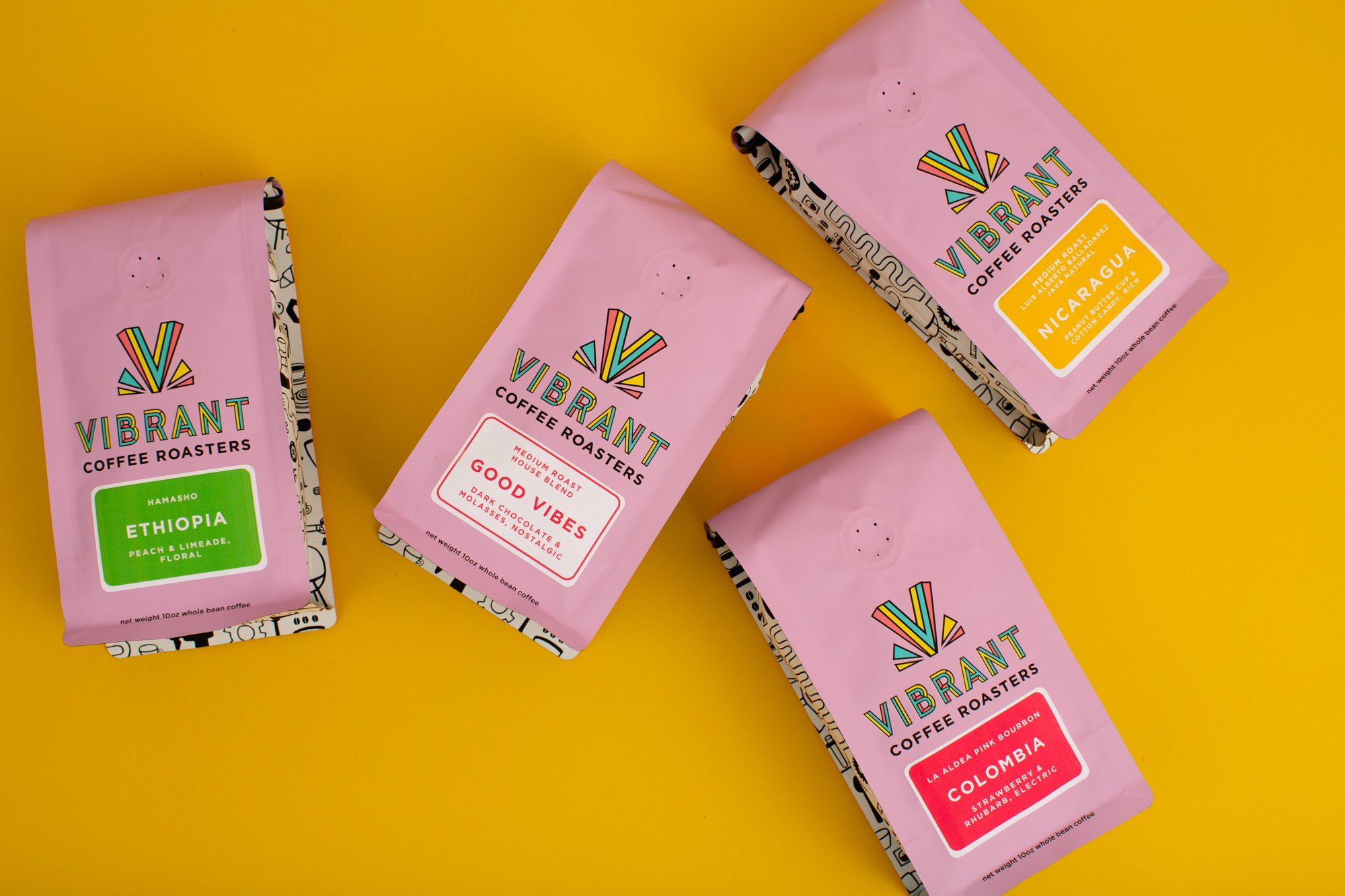Coffee Freshness & Storage
We get questions about these topics all the time so we thought we’d give you all a quick rundown on our philosophy.
Freshness
As soon as coffee drops out of the roaster into the cooling tray, the staling process has begun. Coffee has a huge number of volatile, aromatic compounds that simply disappear over time. A huge number of other compounds oxidize, which has a negative impact on flavor. If this was the only factor to consider, then coffee would taste best if we ground and brewed it the second it came out of the roaster.
However, very fresh coffee is also full of carbon dioxide. As coffee ages, it de-gasses (the CO2 escapes). If you brew coffee that is too fresh, the CO2 interferes with the brew water’s ability to penetrate into the coffee grounds (because the gas itself is exiting the grounds), so you get lower, less even extractions, which makes the coffee taste simultaneously more sour and more harsh/bitter/astringent (and less sweet) than it would if it had de-gassed more. Very fresh coffee can also literally have a gassy kind of taste which is pretty similar to a roasty/bitter flavor.
The ideal balance between staling and de-gassing for the vast majority of our coffees happens in the 6-20 day post-roast window. Fresher than 6 days it is just too hard to extract enough and you risk getting the gassy bitter taste (plus the sour/vegetable/under-extracted flavors), and older than 20 days you start to risk some noticeable signs of staling. That said, plenty of our coffees still taste very, very good at 4-5 weeks post-roast. This is particularly true with extremely high-quality, very dense, well-processed washed coffees - we’ve had a few geshas that taste incredible at two months post-roast. However, this is more the exception than the rule.
Now, once you’ve waited a few days to open your bag, how should you store your beans?
Storage
Simply roll down the bag, squeezing out as much of the air as you can, and lock it down with the tin tie. Fancy storage containers are available on the market but they give no noticeable improvement in flavor unless you are storing your coffee for months (in which case there’s a better solution anyway).
What about bags with ziplocks? It might seem like a ziplock will keep out oxygen better than a tin tie, but remember, there’s still air in the bag if you seal it shut with a ziplock. The amount of air that goes in/out a tin-tied shut bag is negligible. We have taste tested this extensively and there is simply no difference in flavor between beans stored in a zip-locked bag compared to a tin-tied shut bag. Plenty of other roasters have found the same thing - the proliferation of ziplock bags on the market exists because of consumer perception rather than reality. We actually chose the more expensive tin tie option over the cheaper ziplock because the ziplocks can interfere with hooking bags onto grinders for customers who wish to purchase ground coffee rather than whole bean.
The roll-it-down-and-lock-it-shut-with-a-tin-tie method works great if you are going to use up the whole bag within a week or two. If you need to store beans for longer than that after you initially open the bag, you might want to consider vacuum-sealing and freezing your coffee. The very low temperature in your freezer, combined with the oxygen removal, means that the oxidizing/staling reactions happen very, very slowly, so you can preserve coffee freshness for years this way.
There are two different strategies for this: 1) freezing individual doses, and 2) freezing a few days’ worth of beans together. Here’s how to do them correctly.
Freezing Individual Doses
Step 1 Allow coffee to de-gas in original, sealed packaging your preferred time post-roast (we’d probably do 12 days).
Step 2 Open bag. Weigh out doses.
Step 3 Vacuum seal individual doses.
Step 4 Label and put in freezer.
Step 5 When you want to make coffee, remove individual dose from freezer, open it up, and grind it immediately. The beans being cold will actually make them produce a slightly more uniform grind distribution than they would if they were warmer. Then brew your coffee!
Freezing Several Doses Together
Step 1 Allow coffee to de-gas in original, sealed packaging your preferred time post-roast (we’d probably do 7 days here instead of 12 because the aging will continue over the next few days when you remove this dose from the freezer).
Step 2 Open bag. Weigh out doses.
Step 3 Vacuum seal 3-7 days’ worth of coffee in one package (or whatever you want really). Repeat until you have all the coffee from the bag now vacuum sealed.
Step 4 Label and put in freezer.
Step 5 THE DAY BEFORE YOU WANT TO MAKE COFFEE, remove one package from freezer and let it sit on your counter overnight to thaw.
Step 6 The next day, open it up, grind and brew.
Step 7 Close up the package, squeezing as much air out as you can, and leave it at room temperature. Continue grinding & brewing as normal over the next few days.
Finally, the “Easy-Freeze Method”
The easiest thing to do is simply put a piece of tape over the de-gassing valve once the beans are about 7 days post-roast, then put the whole bag in the freezer. Take it out a day or two before you want to start brewing that coffee. Then just open the bag, brew, and then roll the bag down tight & keep it at room temperature. Then each day you can just open it up, brew, and roll it back down tight. Simple, and you’ll have great coffee, full of flavor! If you do this method, you will want to use up the coffee within a week or two of opening the bag.
Note: what you DON’T want to do is take a package out of the freezer, open it immediately, take out one dose of coffee, then shut it and put it back in the freezer. When you open it while the beans are frozen, warm air will rush in and water will immediately start condensing on the beans. While you likely won’t actually get any mold growing or anything like that (because it is back in the freezer), the water is going to start removing flavor from the beans as you are basically starting the extraction process and this is going to negatively impact the flavor when you go to brew these beans. If you take a package out of the freezer, open it immediately, take out one dose to grind & brew immediately, and shut it and leave it on your counter, you will get all kinds of weird, moldy flavors developing from the condensation.


